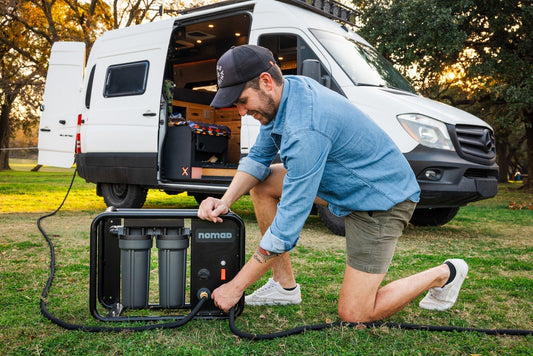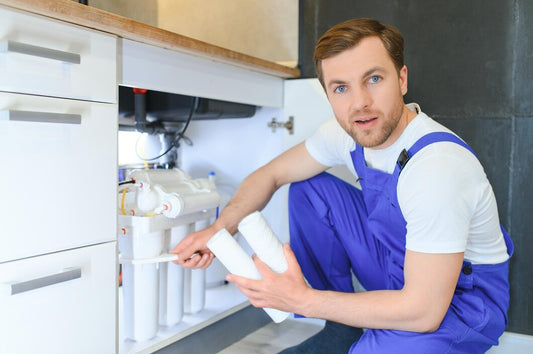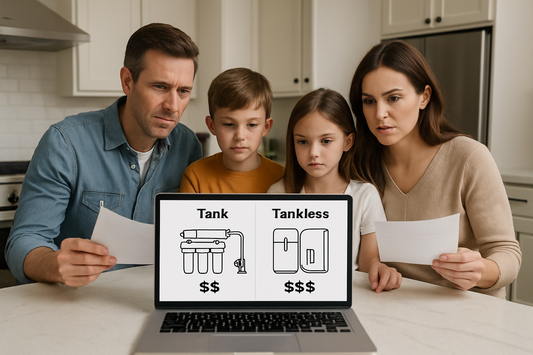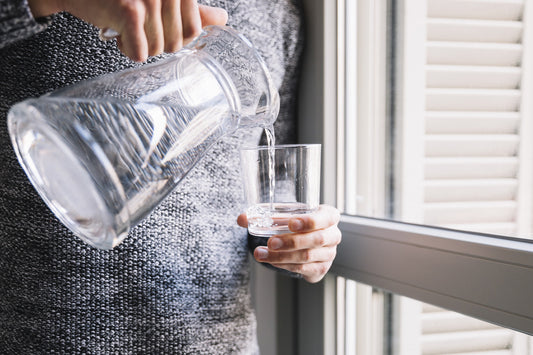Transform Your Home's Water Quality: The Complete Installation Solution Guide
Clean, safe drinking water isn't a luxury—it's a necessity for every American household. If you're among the millions concerned about tap water quality, learning how to install water filter system solutions can be your family's gateway to healthier living and significant long-term savings.
Recent EPA studies reveal that even treated municipal water can contain traces of chlorine, heavy metals, and other contaminants that affect taste, odor, and potentially your health. The good news? Installing a home water filtration system is more accessible than ever, and with the right guidance, most homeowners can tackle this essential upgrade themselves.
Why Your Home Needs a Water Filter System Today
Health Protection That Matters
Modern water treatment facilities do excellent work, but they can't eliminate every concern. Chlorine used for disinfection can create byproducts that affect taste and may pose long-term health considerations. Heavy metals from aging infrastructure, agricultural runoff, and industrial contaminants can still find their way into your tap water.
A properly installed home water filter removes these concerns at the source, giving you confidence in every glass your family drinks.
Financial Benefits You'll Notice Immediately
The average American family spends over $600 annually on bottled water. A quality home filtration system pays for itself within the first year while providing unlimited access to clean water. When you consider the best home water filter installation as an investment rather than an expense, the math becomes compelling.
Environmental Impact Your Family Can Feel Good About
Every water filter system you install replaces approximately 1,000 plastic bottles annually. For environmentally conscious families, this represents a meaningful way to reduce your household's carbon footprint while improving your daily life.

Image by freepik
Choosing Your Ideal Water Filter Solution
Not all filtration systems are created equal, and the best home water filter installation starts with selecting the right technology for your household's specific needs.
Whole House Filtration Systems
For comprehensive water quality improvement, whole house systems filter water at the point of entry, ensuring every faucet, shower, and appliance receives treated water. These systems excel at removing sediment, chlorine, and larger contaminants throughout your entire home.
Crystal Quest whole house systems offer robust filtration capacity ideal for families serious about comprehensive water treatment. These systems handle high water flow rates while maintaining consistent filtration performance across all household uses.
Under-Sink Reverse Osmosis Systems
When you want restaurant-quality drinking water from your kitchen tap, reverse osmosis delivers exceptional results. These systems remove up to 99% of dissolved contaminants, including heavy metals, fluoride, and microscopic particles that other filters miss.
Waterdrop reverse osmosis systems combine advanced filtration technology with user-friendly design, making them perfect for homeowners who want professional-grade results without complex maintenance requirements.
Countertop and Portable Options
For renters or those seeking flexibility, countertop systems provide excellent filtration without permanent installation. These systems connect directly to your existing faucet and can move with you when needed.

Image by freepik
How to Install Water Filter System: Step-by-Step Success
Essential Preparation Steps
Before beginning your installation, gather these tools: adjustable wrench, pipe cutter, plumber's tape, drill with appropriate bits, and safety glasses. Review your specific system's manual thoroughly—each manufacturer provides detailed instructions tailored to their design.
Pro Tip: Test your water pressure before installation. Most systems require 40-80 PSI for optimal performance. If your pressure falls outside this range, consider adding a pressure regulator or booster pump.
Whole House System Installation
- Locate Installation Point: Find your main water line where it enters your home, typically near the water meter or pressure tank.
- Shut Off Water Supply: Turn off your home's main water supply and drain the lines by running faucets until water stops flowing.
- Cut Into Main Line: Using a pipe cutter, create space for your filter housing. Measure twice, cut once—precision matters here.
- Install Filter Housing: Connect the housing using appropriate fittings for your pipe material (copper, PVC, or PEX). Apply plumber's tape to threaded connections.
- System Testing: Slowly restore water pressure and check all connections for leaks. Run water through the system for 10-15 minutes to flush any installation debris.
Under-Sink System Installation
- Prepare Installation Area: Clear under-sink space and locate cold water supply line. Most systems connect to the cold water line feeding your kitchen faucet.
- Install Dedicated Faucet: If your system includes a separate faucet, drill the appropriate hole in your sink or countertop. This typically requires a 1.25-inch hole for standard faucets.
- Connect Water Supply: Install a tee fitting on your cold water line to divert water to your filtration system. This connection point feeds the system while maintaining normal faucet operation.
- Mount System Components: Secure the filtration housing under your sink, ensuring easy access for future filter changes. Leave adequate clearance around the unit.
- Final Connections: Connect the system output to your dedicated faucet, and if applicable, connect the waste line to your drain system.

Image by Tonodiaz
Maximizing Your Investment: Maintenance and Optimization
Filter Replacement Schedule
Proper maintenance ensures your system continues delivering clean water while protecting your investment. Carbon pre-filters typically need replacement every 3-6 months, while reverse osmosis membranes can last 2-3 years with proper care.
Set calendar reminders for filter changes—consistent maintenance prevents system strain and ensures optimal water quality. Many modern systems include indicator lights or apps that track filter life automatically.
Performance Monitoring
Pay attention to changes in water taste, flow rate, or pressure. These often indicate it's time for maintenance before your scheduled replacement date. Quality systems maintain consistent performance when properly maintained.
Troubleshooting Common Issues
Low Water Pressure: Usually indicates clogged pre-filters or a membrane nearing replacement time.
Unusual Taste or Odor: Often signals carbon filter saturation or system contamination requiring immediate attention.
Leaks: Check all connection points and replace any worn O-rings or seals promptly.

Image by freepik
Investment Comparison: Making the Smart Choice
When evaluating your options, consider total cost of ownership rather than just initial purchase price. A quality system that lasts 10-15 years with proper maintenance provides better value than frequent replacements of cheaper alternatives.
Whole house systems typically range from $800-2,500 installed, while under-sink reverse osmosis systems cost $300-800. When compared to ongoing bottled water expenses, both options provide excellent returns on investment.
For homeowners committed to comprehensive water quality improvement, exploring professional-grade whole house filtration systems ensures you're getting maximum value for your investment.
Taking Action: Your Next Steps
Installing a water filter system represents one of the most practical home improvements you can make. The combination of health benefits, cost savings, and environmental responsibility makes this decision straightforward for most families.
Start by testing your current water quality to identify specific contaminants you want to address. This information guides you toward the most effective filtration technology for your situation.
Whether you choose a comprehensive whole house solution or targeted under-sink filtration, the best home water filter installation is the one that matches your family's needs, your home's plumbing, and your long-term goals.
For families ready to explore premium filtration options, our residential water filtration collection features systems designed specifically for American homes, backed by industry-leading warranties and customer support.
Frequently Asked Questions:
Can I install a water filter system myself? Yes, most homeowners with basic DIY skills can successfully install under-sink and countertop systems. Whole house systems may require professional installation depending on your plumbing configuration.
Which type of filter removes the most contaminants? Reverse osmosis systems provide the most comprehensive contaminant removal, eliminating up to 99% of dissolved solids, heavy metals, and microscopic particles.
How often should I replace filters? Replacement frequency depends on your water quality and usage. Pre-filters typically need changing every 3-6 months, while main filters and membranes last 1-3 years.
Will a water filter reduce my water pressure? Quality systems maintain good water pressure when properly sized and maintained. Pressure reduction usually indicates it's time for filter replacement.





